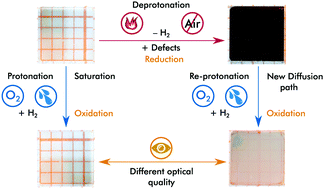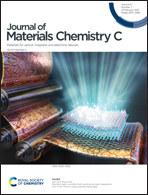Kinetics of the hydrogen defect in congruent LiMO3†
Abstract
Hydrogen incorporation during crystal growth or other treatment has attracted research interest for a long time, but the diffusion paths and the role of additional defect sites within the lithium metal oxides (LiMO3 with M = Nb, and Ta) are still not fully understood. We investigated the hydrogen diffusion by crystal orientation- and light polarization-resolved FT-IR spectroscopy. The OH− stretching vibration is modified by the out- and in-diffusion of hydrogen using appropriate temperature and atmosphere conditions. An isotropic out- and in-diffusion in the congruent as-grown materials was observed. For C-LiNbO3 a higher diffusion rate and a lower activation energy than in C-LiTaO3 were found. In comparison to C-LiTaO3, a possible reason could be the Ta interstitial defect cluster, which limits the diffusion through the empty octahedral sites. The in-diffusion coefficients of reduced crystals are almost two orders of magnitude higher compared to those of the as-grown materials. Obviously, the hydrogen diffusion is promoted by the presence of oxygen and lithium vacancies. Since the defect sites are decorated with hydrogen, the hydrogen saturation concentration depends on the defect concentration. Finally, the same diffusion rate is observed for reduced LiTaO3 and LiNbO3. Consequently, vacancy formation is lifting the diffusion blocking by Ta interstitial defects.



 Please wait while we load your content...
Please wait while we load your content...